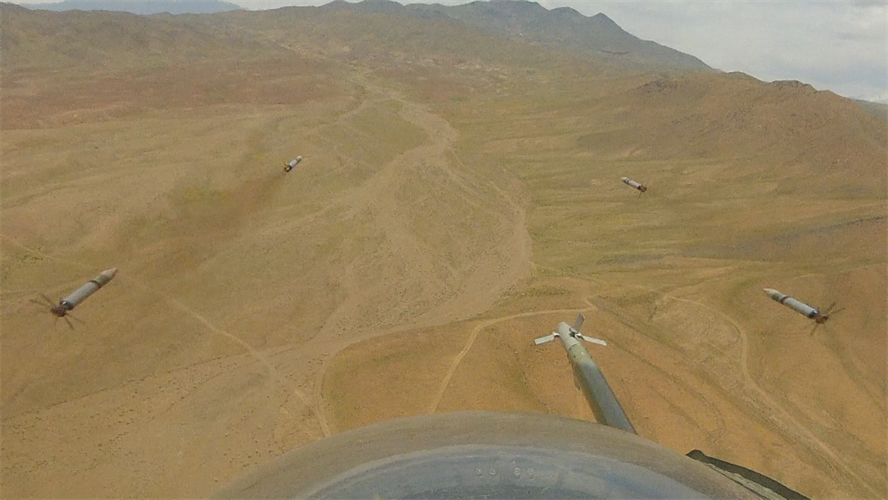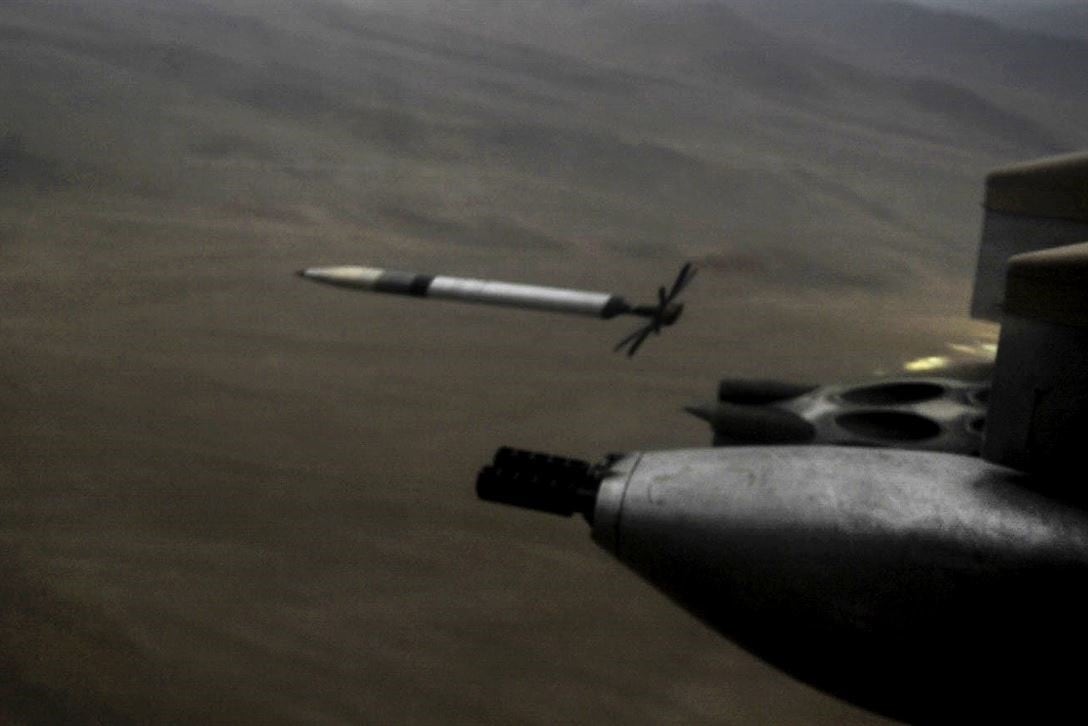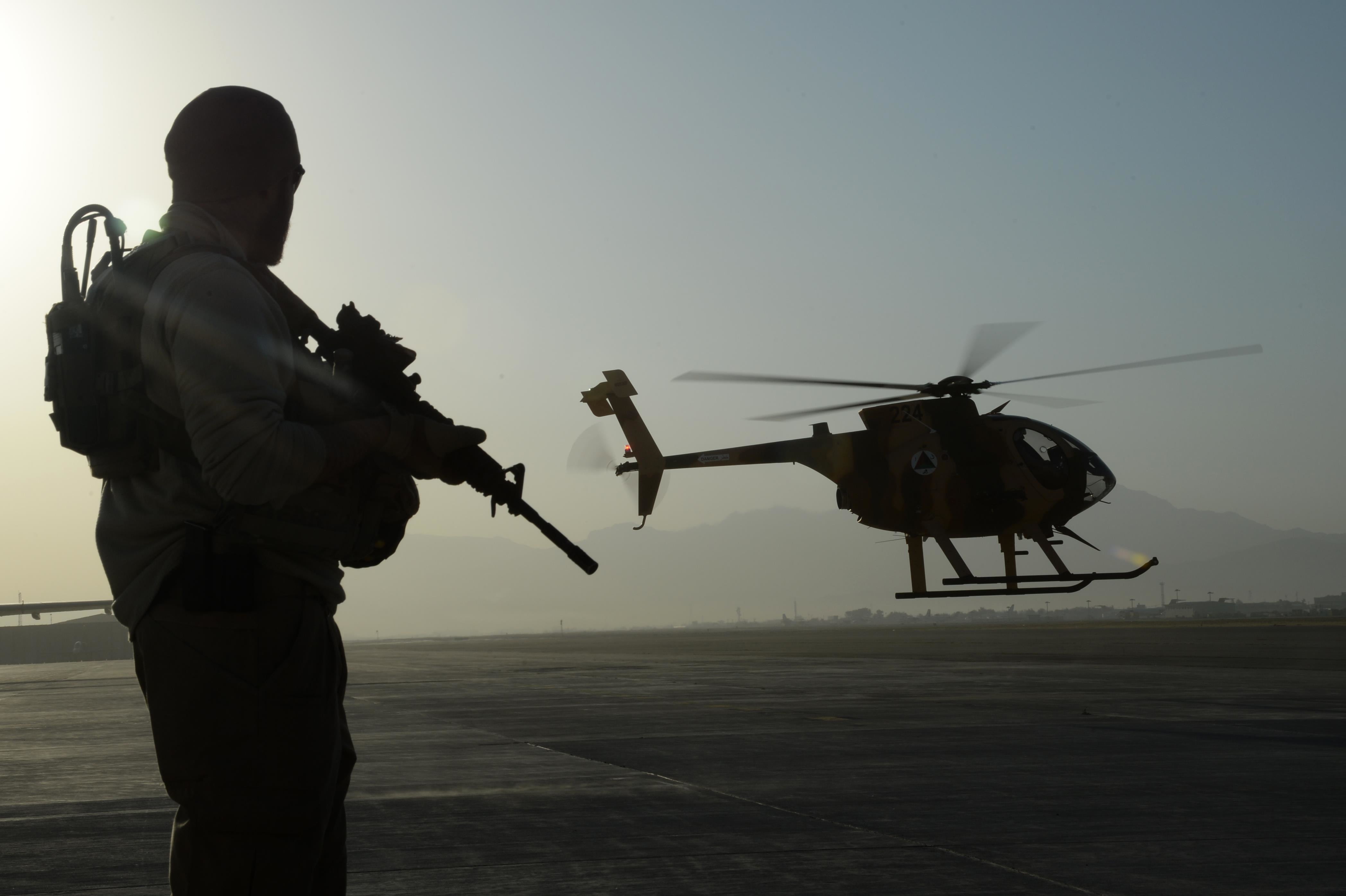Editor's note: The following is an opinion piece.
On Feb. 8, Military Times published an article titled "Is the Afghan Air Force trigger happy? Here's what the numbers say." The article challenged the competency of the Afghan Air Force and asserted that the young service "is responsible for a troubling pattern of botched airstrikes that have led to a stunning rise in civilian casualties." The numbers brought forth in the article are an incomplete sample used to imply a problem with Afghan airpower, potentially caused by Afghan air force pilots being too trigger-happy. The mistake of relying on incomplete statistics to make a case is compounded by comparing things that cannot reasonably compared. The article paints an incomplete and inaccurate picture of an emerging air force that is having to be built out of nothing while contesting control of its home country.
As it happens, I was in Kabul in October to observe AAF A-29 operations. As part of my tasking, I interviewed as many of the U.S. Air Force air adviser pilots supporting the Afghan light air support program as I could find — which was almost all of them. This was preceded by a trip to do the same thing at Moody Air Force Base, Georgia, where the U.S. trains A-29 pilots. Without exception, Air Force advisers characterized the majority of the Afghan A-29 pilots as talented and highly disciplined, even under adverse conditions and command pressures typical of an aviation culture that prizes mission accomplishment. So I have an inside view of the AAF denied to outsiders. But I also have an understanding of the key issues that make it not only inadvisable to try to make a comparison between an experienced, modern fast-jet Air Force with 55 fighter/attack squadrons and a fledgling air force with a combat strength numbering a few dozen aircraft. The statistical analysis falls short on four fronts: it relies on an incomplete sample of combat aircraft and relevant sortie rates, does not take into complete account the difference in mission taskings between the U.S. and Afghanistan, it ignores the impact of precision weapons, and it relies on civilian casualty statistics that are not backed up with rigorous on-scene confirmation. The numbers, as outlined in the source article, tell very little.
The Afghan air force operates a small number of A-29 Super Tucano, which are modern light attack turboprops. These have been conducting combat sorties in Afghanistan since only April of 2016 — a bare 10 months. There are a number of MD-530F helicopters, which started deliveries in 2011 as pilot training aircraft — the armed MD-530s are a recent addition. The AAF also operates legacy Mi-35 HIND E and Mi-17 HIP H helicopters. None of these aircraft are equipped with precision weapons. The AAF does not typically discuss the operations of the Soviet-legacy aircraft, so they were excluded from the summary — and that complicates the picture. The absence of data is just that — an empty hole with no data to fill it. The absence of numbers tells you nothing — but can skew subsequent analysis. If the Afghans use legacy Russian systems in combat, they are saddled with a system limited by guns and notoriously inaccurate Soviet-era S-5 rockets. These rockets, designed in the 1950s, are no more accurate now than they were for Soviet pilots in Afghanistan after 1979. But inaccurate does not mean ineffective, and if S-5s are the tools you have on hand for ground support, that's what you use. Leaving Afghan army forces without supporting fires is not an acceptable option. If inaccurate rockets are all you have to work with, then it's reasonable to expect that the effects gained are not necessarily related to how "trigger-happy" pilots may or not be.

An Afghan Mi-35 helicopter fires 57mm S-5 rockets during a live fire exercise May 15, 2013 south of Kabul.
Photo Credit: Air Force
The way combat aircraft are employed by the two countries is completely different. The typical U.S. Air Force fighter/attack sortie is essentially airborne alert — taking off with weapons but not necessarily a target. The Afghans, with their small numbers and lack of aerial refueling capability, don't have the luxury of keeping fast jets continuously airborne in case a target shows up. They launch with a specific objective in mind. On the average day, if a U.S. fighter launches on a mission and it goes as planned, the aircraft lands with a full weapons load. If an AAF A-29 launches and the mission goes as planned — it comes back empty. Both missions may involve targeting combatants intermixed with civilians, but the USAF aircraft also has a massive advantage in sensors, weapons and techniques to lower the risk to noncombatants. Any comparison between the two air force's frequency of weapons employment must take into account that the aircraft are accomplishing different missions and using different methods of employing airpower for different objectives.
Precision weapons are a big deal. A typical U.S. Air Force fighter takes off with the only nonprecision weapon on the airplane being the gun. The Afghans simply cannot afford to spend precision munitions like we do, but they may not need to. The A-29 is turning out to be a pretty accurate bomber with free fall munitions — and the Afghans do not perform close air support missions like the U.S. does because they are not yet able to provide the close integration that U.S. forces have been refining since World War II. But however good the Afghans might be with their weapons system, they are still employing so-called "dumb" weapons that are subject to a host of errors that can't be corrected once the weapon leaves the airplane. Wind, atmospheric conditions, aircraft parameters, weapon time of flight, slightly different bomb weights and even the width of the pixel in the middle of the HUD "pipper" all conspire to create minor errors. And that means that no matter how talented or disciplined the aviators are, their average accuracy is going to be lower than comparable precision weapons that are guided until impact. I once hit a decommissioned Dutch APC on a target range in the Netherlands with four 500-pound laser-guided bombs that arrived within 100 milliseconds of each other — a feat that is flat-out impossible with dumb bombs.

An S-5 rocket is fired from an Afghan Mi-17 helicopter near Kabul, Afghanistan, Dec. 7, 2015.
Photo Credit: Air Force
Warfare is dirty, ugly and nasty. It is a human endeavor. And a common outcome of this is that the casualties are not limited to combatants. It has always been so. Military professionals accustomed to dealing with high explosives realize that it is flat-out impossible to avoid civilian casualties, and we try to minimize them using the tools available. Sometimes, we take higher risks ourselves, and sometimes we accomplish the mission suboptimally. It is impossible to eliminate unintended effects, despite an unrealistic belief that we ought to be able to. The source article cited a 99 percent increase in civilian casualties between 2015 and 2016, without revealing in the graphics that the A-29s didn't even fly in combat in 2015. The absolute number of casualties, each of them an individual tragedy, is uninformative without knowing the comparative number of sorties. It is the unintended casualty rate, not the absolute numbers, that are informative. If the casualty count increased by 99 percent while the number of sorties increased by 200 percent, the casualty rate would be dropping. Alas, this particular hole in the data also remains unfilled — even if we stipulate that UN casualty statistics, which are not always subject to on-scene verification, are valid.
Not only do "the numbers" not tell the whole story, they don't even tell a story. They certainly don't support the article narrative, which may be paraphrased as "anything less than perfection in airpower employment points to trigger-happy pilots." There are too many holes in the data to come up with an honest conclusion at all. An honest conclusion would treat the question as "unassessable," given all of the difficulties in assembling a complete picture, much less comparing that picture to a suitable sample case. My own exposure to the A-29 pilots leaves me with the impression that they're doing unexpectedly well, even by U.S. standards, and they ought to be commended for it. That's not the whole story either, but I'm not trying to assert that it is.
Mike "Starbaby" Pietrucha is an Air Force colonel who has served as an instructor electronic warfare officer in the F-4G Wild Weasel and the F-15E Strike Eagle. He's flown 156 combat missions over Iraq and the former Republic of Yugoslavia. His views do not necessarily reflect the official policy or position of the Air Force or the U.S. government.




